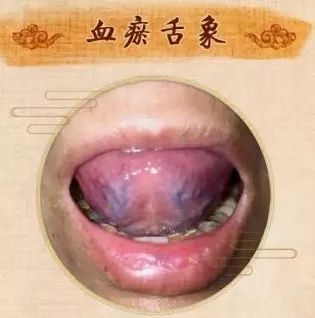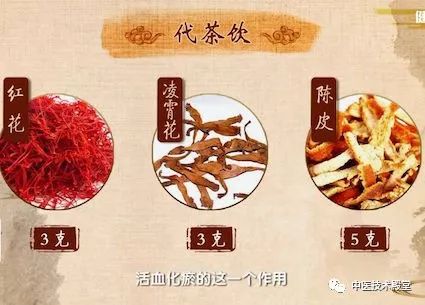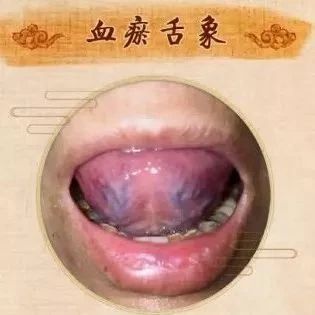Expert: Yang Zhong, Chief Physician, Beijing Traditional Chinese Medicine Hospital, Capital Medical University
Obstruction of the meridians can lead to impaired blood circulation, causing metabolic waste to accumulate. Over time, this can form phlegm, which intertwines with blood stasis, and eventually, toxins may develop, leading to cancer.
How to Identify Blood Stasis
1. Observe Pain
Characteristics of stasis pain: fixed location, persistent pain, sensitivity to pressure, and noticeable pain at night.
Individuals with a blood stasis constitution are more susceptible to lung cancer, esophageal cancer, liver cancer, breast cancer, and ovarian cancer.
2. Examine the Tongue

Enlarged, bifurcated, and dark purple veins under the tongue may indicate a blood stasis constitution.

Facial signs such as a dull complexion, lack of luster, rough skin, persistent dark circles, and purple-black lips may also indicate blood stasis.
3. Presence of Insomnia Symptoms
Insomnia may manifest as difficulty falling asleep, restless sleep, frequent nightmares, and sweating at dawn.
How to Prevent Blood Stasis?
1. Ensure Quality Sleep
Maintaining good sleep quality without excessively depleting the body’s Yang energy is crucial for smooth blood circulation, which is one of the important methods to reduce blood stasis.
2. Regulate Emotions
Emotional entanglement can lead to Qi stagnation, which ultimately results in blood stasis. Therefore, it is essential to manage emotions and maintain a cheerful disposition.
3. Exercise
Physical activity can accelerate blood flow and help prevent blood stasis.
4. Diet
Hawthorn (Shan Zha) has a sour taste and enters the spleen and stomach, promoting digestion and invigorating blood circulation. It is considered a key herb for “invigorating blood and resolving stasis”. The spleen and stomach are the first stations for blood stasis; regular consumption of hawthorn not only aids digestion but also promotes smooth Qi flow and invigorates blood circulation.
For women with amenorrhea or postpartum stasis, decocting one or two liang (approximately 30-60 grams) of hawthorn with seven or eight qian (approximately 22-25 grams) of brown sugar can help eliminate masses and clots. (Zhang Xichun, “Medical Records of Traditional Chinese and Western Medicine”)
Experts Remind: Individuals with poor stomach health are advised to consume roasted hawthorn, while those with better spleen and stomach health can eat raw hawthorn. In addition to hawthorn, Sanqi (Panax notoginseng) can also be used. Alcoholic beverages such as rice wine, yellow wine, and red wine can also help invigorate blood circulation; moderate consumption is recommended, but excessive intake should be avoided.
5. Herbal Tea Substitutes

Carthamus tinctorius (Hong Hua) can invigorate blood circulation and resolve stasis, Chen Pi (dried tangerine peel) can regulate Qi and resolve phlegm, and Wisteria (Ling Xiao Hua) can enter the liver meridian, invigorate blood circulation, and regulate emotions.
Preparation: 3 grams of Hong Hua, 3 grams of Ling Xiao Hua, and 5 grams of Chen Pi, add to 500 milliliters of hot water, steep for 5 minutes before serving.
Acupuncture and Moxibustion for Blood Stasis
Moxibustion has significant effects in invigorating meridians, promoting blood circulation, and resolving stasis. Stimulating specific acupuncture points can enhance blood flow. Commonly used points include:
San Yin Jiao, Xue Hai, He Gu, Qu Chi, Zu San Li, Ge Shu
-
San Yin Jiao is the meeting point of the three Yin meridians of the foot, which regulates the spleen and nourishes blood, promoting meridian circulation;
-
Xue Hai is a point on the spleen meridian, which regulates blood and nourishes the body, dispelling wind and clearing heat, treating various blood disorders;
-
He Gu is the source point of the large intestine meridian, which clears heat, dispels wind, and promotes Qi and blood circulation;
-
Qu Chi is a connecting point of the large intestine meridian, which clears heat, dispels wind, alleviates swelling and pain, harmonizes Qi and blood, and opens meridians;
-
Ge Shu is one of the eight meeting points, specifically for blood disorders, promoting Qi and invigorating blood;
-
Zu San Li is a point on the stomach meridian, which strengthens the spleen and stomach, enhances physical beauty, and regulates Qi and blood;
Individuals with a blood stasis constitution may benefit from regular moxibustion at these points.
If you want moxibustion to be more effective, we recommend our homemade moxa sticks.
Based on three-year-aged moxa, we add ingredients such as shellfish, Angelica sinensis (Dang Gui), Chuanxiong (Chuan Qiong), Salvia miltiorrhiza (Dan Shen), Motherwort (Yi Mu Cao), frankincense, and Achyranthes bidentata (Niu Xi), among twenty other herbs. Our moxa sticks have a strong aroma and efficacy that differs from others: they provide sufficient heat and strong penetration, suitable for treating pain and cold symptoms, particularly at the navel and kidney points.

Purchasing is also convenient; click on “Read the Original” below.

Experts remind: In addition to the above methods, external applications, medicinal baths, and foot soaks can also invigorate blood circulation and resolve stasis. Specific formulas have been published several times on this platform; it is best to consult a local TCM practitioner to tailor the most safe and effective treatment based on your individual constitution.

